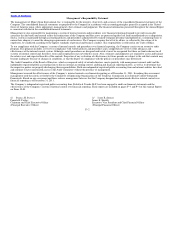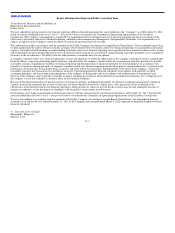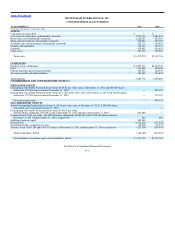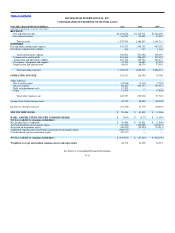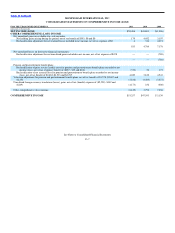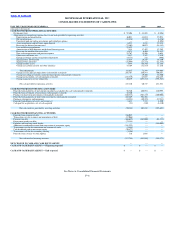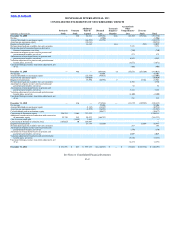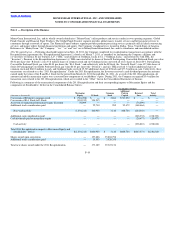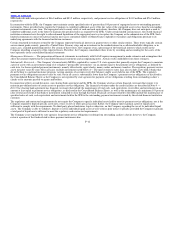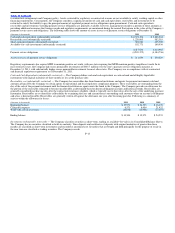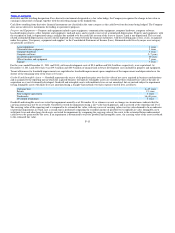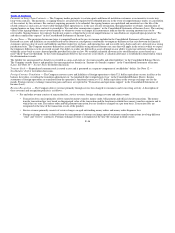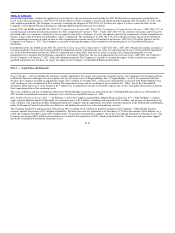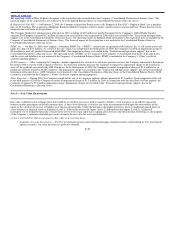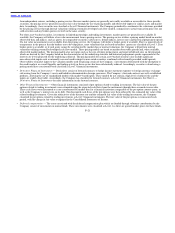MoneyGram 2011 Annual Report Download - page 94
Download and view the complete annual report
Please find page 94 of the 2011 MoneyGram annual report below. You can navigate through the pages in the report by either clicking on the pages listed below, or by using the keyword search tool below to find specific information within the annual report.
Table of Contents
SPEs had cash and cash equivalents of $46.8 million and $83.2 million, respectively, and payment service obligations of $41.9 million and $76.9 million,
respectively.
In connection with the SPEs, the Company must maintain certain specified ratios of greater than 100 percent of segregated assets to outstanding payment
instruments. These specified ratios require the Company to contribute additional assets if the fair value of the segregated assets is less than the outstanding
payment instruments at any time. The segregated assets consist solely of cash and cash equivalents; therefore, the Company does not anticipate a need to
contribute additional assets in the future to maintain the specified ratios as required by the SPEs. Under certain limited circumstances, the related financial
institution customers have the right to either demand liquidation of the segregated assets or to replace the Company as the administrator of the SPE. Such
limited circumstances consist of material (and in most cases continued) failure of MoneyGram to uphold its warranties and obligations pursuant to its
underlying agreements with the financial institution customers.
Certain structured investments owned by the Company represent beneficial interests in grantor trusts or other similar entities. These trusts typically contain
an investment grade security, generally a United States Treasury strip, and an investment in the residual interest in a collateralized debt obligation, or in
some cases, a limited partnership interest. For certain of these trusts, the Company owns a percentage of the beneficial interests which results in the
Company absorbing a majority of the expected losses. Therefore, the Company consolidates these trusts by recording and accounting for the assets of the
trust separately in the consolidated financial statements.
Management Estimates — The preparation of financial statements in conformity with GAAP requires management to make estimates and assumptions that
affect the amounts reported in the consolidated financial statements and accompanying notes. Actual results could differ from those estimates.
Substantially Restricted — The Company’s licensed entity MPSI is regulated by various U.S. state agencies that generally require the Company to maintain
a pool of assets with an investment rating of A or higher (“permissible investments”) in an amount equal to the payment service obligations, as defined by
each state, for those regulated payment instruments, namely teller checks, agent checks, money orders and money transfers. The regulatory payment service
assets measure varies by state, but in all cases excludes investments rated below A−. The most restrictive states may also exclude assets held at banks that
do not belong to a national insurance program, varying amounts of accounts receivable balances and/or assets held in one of the SPEs. The regulatory
payment service obligations measure varies by state, but in all cases is substantially lower than the Company’s payment service obligations as disclosed in
the Consolidated Balance Sheets as the Company is not regulated by state agencies for payment service obligations resulting from outstanding cashier’s
checks or for amounts payable to agents and brokers.
In connection with its second lien notes, one clearing bank agreement and the SPEs, the Company also has certain financial covenants that require it to
maintain pre−defined ratios of certain assets to payment service obligations. The financial covenants under the credit facilities are described in Note 9 —
Debt. One clearing bank agreement has financial covenants that include the maintenance of total cash, cash equivalents, receivables and investments in an
amount at least equal to payment service obligations, as disclosed in the Consolidated Balance Sheets, as well as the maintenance of a minimum 103 percent
ratio of total assets held at that bank to instruments estimated to clear through that bank. Financial covenants related to the SPEs include the maintenance of
specified ratios of cash, cash equivalents and investments held in the SPE to the outstanding payment instruments issued by the related financial institution
customer.
The regulatory and contractual requirements do not require the Company to specify individual assets held to meet its payment service obligations, nor is the
Company required to deposit specific assets into a trust, escrow or other special account. Rather, the Company must maintain a pool of liquid assets
sufficient to comply with the requirements. No third party places limitations, legal or otherwise, on the Company regarding the use of its individual liquid
assets. The Company is able to withdraw, deposit or sell its individual liquid assets at will, with no prior notice or penalty, provided the Company maintains
a total pool of liquid assets sufficient to meet the regulatory and contractual requirements.
The Company is not regulated by state agencies for payment service obligations resulting from outstanding cashier’s checks; however, the Company
restricts a portion of the funds related to these payment instruments due
F−12


